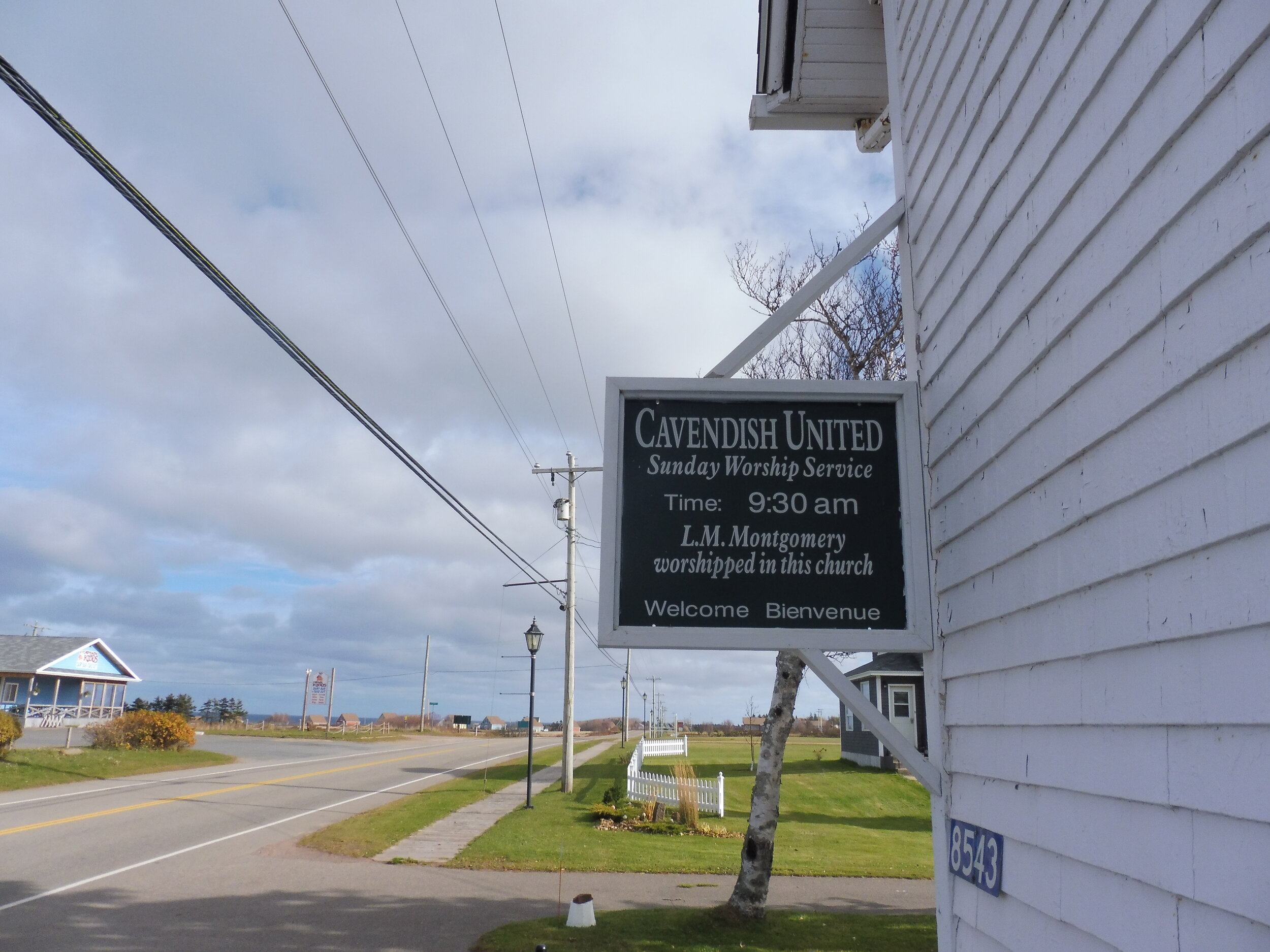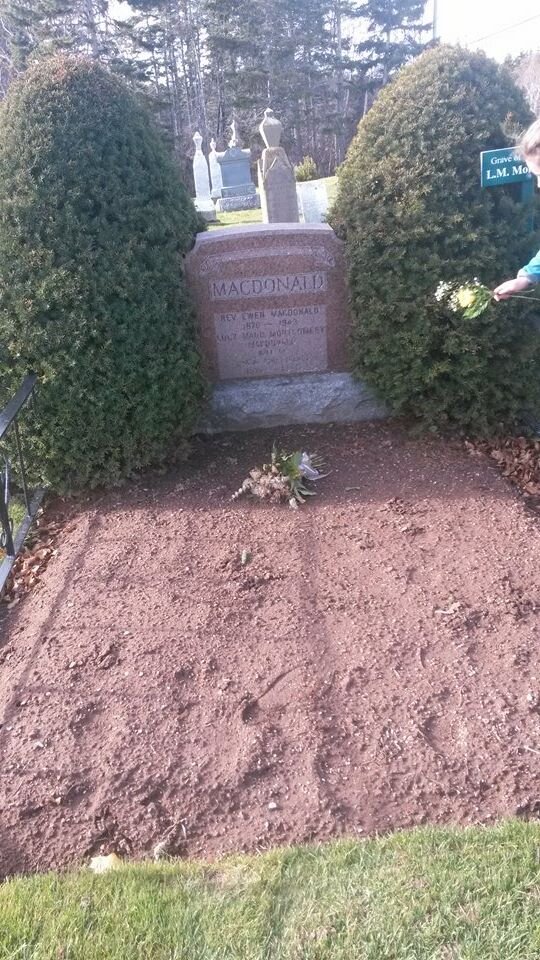Visiting Anne of Green Gables
An Essay on Anne, art and family by Ella Borrie
Grandma Joan grew up on an apricot orchard in Coal Creek, near Roxburgh. A place with river valleys and golden hills blazing under the bright sky. Summer is the busiest time in a stone fruit orchard. The fruit needs to be picked, packed and sent off to market. It’s like the rising Central Otago heat changes time and separates the harvest from the rest of the year.
In the 1940s Grandma Joan’s beloved Aunty Jean and cousin Rosemary would come for Christmas. When Grandma Joan talks about those summers she remembers Rosemary at 4 years old, standing on a box and packing jam fruit. The jam apricots didn’t need to be packed, but Rosemary felt important. She remembers pulling one of her brother’s trolleys down the main road to the packing shed, with lunch for the family . She often talks about how she can still hear the tin of cutlery rattling along the gravel road. She remembers they ate cream and ripe apricots for pudding. She also remembers that every Christmas Aunty Jean gave her a new Anne of Green Gables book. This was how my Grandma met Anne.
Grandma Joan still loves the books, and passed the stories down to her daughters and to us cousins. Two of my cousins have middle names from the books. My copy of Anne of Green Gables was given to me by my Grandparents. The inscription says: “We hope you enjoy Anne of Green Gables as much as your Grandma Joan, your mother, Aunty Susan and Tracy and thousands of others. With all our love, Grandma Joan and Johnny”.
I remember summers in Alexandra when I was little, before my family moved from Invercargill to Cromwell. I can picture rough schist, the too-hot turquoise concrete at the old pool and the VHS Anne movies in the cupboard. Megan Follows played Anne and had puffed sleeves and big Eighties hair. Grandma Joan would watch the movies with us kids and we all loved them.
* * *
Anne of Green Gables was first published in 1908, and has never gone out of print. The novels are set in Prince Edward Island on Canada’s East Coast. The story follows how spinster-siblings, Mathew and Marilla, decide to adopt an orphan boy to help on their farm. Instead of a boy they get sent Anne; a smart, precocious and big-hearted girl. It’s a story about finding family.
Anne is a sparkling heroine you can’t help but love. She is vital, passionate and has red hair. She is hungry for knowledge, for theatrics and everyday magic. Amongst the character’s joy, there is a ragged edge. Anne is eager; she has endless energy but also has a pulsing need for whānau and belonging.
Lucy Maud Montgomery wrote optimistic stories despite having a life that was difficult and lonely at times. Montgomery grew up in Prince Edward Island, and loved it fiercely. Sense of place and nature is central to the Anne books, and it always felt important to visit the setting of the story.
I have soaked up Anne all my life. She is a companion that has stretched as I have grown. I turn to her when I need comfort; when a pandemic comes, when I’m heart-aching and tired. Anne of Green Gables, is one of the first books I pack when I move. I think of her when the seasons change, and make sure to notice the colour and texture around me. The story feels so entwined with my family it does not seem unreasonable to make life decisions informed by the book.
* * *
In 2015 I went on a semester abroad to Dalhousie University in Halifax, Nova Scotia. Deciding on a university based on proximity to Anne’s birthplace seemed as good a reason as any. I also loved the theatrics of making a pilgrimage to Prince Edward Island, like it was something Anne would approve of. Halifax is a port city and is the biggest in Canada’s Maritime provinces. The landscape is flat: a cracked coastline of granite-slab turns into land filled with lakes.
Halifax is scattered with old cemeteries. The clapboard houses are brightly painted. On the one hill downtown there is a preserved military fort called the Citadel. Every day at noon an actor dressed as a Scottish Victorian soldier fires a cannon. There seems to always be live music playing when you go out. The presence of the Atlantic hovers in the city, always ready to roll fog through.
L M Montgomery lived in Halifax, and also studied English Literature at Dalhousie. She hated living in the city, but wrote a happy version of college life in Anne of the Island. Anne lived in Kingsport (Halifax) on St John’s Street (Barrington Street). You can trace Anne through Halifax; the Old Burying Ground is the cemetery outside her boarding house. Walking in Point Pleasant Park you can imagine Anne rejecting a proposal. Even the pub where I watched the Rugby World Cup final was once the office of a newspaper Montgomery worked for.
My life in Halifax was closer to Anne’s fun college experience than Montgomery’s homesick one. I didn’t get any marriage proposals, but I went to more beer gardens than Anne would have. But like Montgomery, living in Halifax made me face loneliness front on. The trees were different, the streets were wider and the sea was a different colour. There were no maunga framing the sky. My time in Nova Scotia spun off new fascinations with Maritime folklore and music, and I could feel the full shape of myself against a new setting. But despite being much physically closer, I felt far away from the people and places that first made me love Anne.
* * *
I went on a road trip to visit Prince Edward Island with my flatmate, her friend from Ontario and a fellow exchange student, Sorcha from Ireland. Sorcha’s Granny had also introduced her to Anne; a similar thread running through pages and families across the world. Sorcha also understood how important it was to go to Prince Edward Island. She tells me that when we first met she asked why I came to Dalhousie, and I bluntly answered “I just love Anne of Green Gables”.
Prince Edward Island is a dot in the slate-grey Atlantic. To get there from Halifax you have to drive through Nova Scotia and New Brunswick, and then cross a 13 kilometre bridge over the ocean. Anne would have taken a train and a boat. The Island has red soil, and nearing the end of the bridge the red cliffs reared up from the waves. Sitting in the back of the car I felt the prick of tears at seeing the dirt was really red, that the place in the story was real.
Avonlea in the books is based on Cavendish. The town is small and has an old church, a post office and a cemetery. We drove past tourist amenities on the way there; places like Green Gables Golf Course and Shining Waters Family Fun Park. It was dispiriting to see Rollings Reliable-type attractions that were so clearly unrelated to the spirit of the books. I wanted to get a feel for Prince Edward Island, see the plants, smell the air and capture why L M Montgomery loved it so much. I did not want to imagine Anne and Diana playing a few rounds of golf.
Green Gables in the books is based on a house L M Montgomery’s relatives lived in. Now the house is a heritage site looked after by the National Parks service . It’s exactly what you would imagine: white weatherboard with a green roof. It was late autumn when we visited and the house was closed for the season. I didn’t mind not going inside Green Gables, or getting to meet an actor dressed up as Anne. We still got to wander down Lover’s Lane and the Haunted Wood. There was plenty of scope for the imagination.
Cavendish, and on the left, the pathway to the Macneill homestead.
L M Montgomery lived with her Grandparents for most of her childhood. You can walk from Green Gables through the Haunted Wood to the Macneill homestead. The spot where the house stood and surrounding land is still owned by the family. It was mid-afternoon and despite the cold, the foliage was on fire with yellows and reds. We walked up a quiet path between paddocks. The trees were rustling in the wind, and there was no one around. Turning a corner there was a grassy area filled with falling leaves. Sunken into the ground was the stacked-stone cellar of a farmhouse. This is where L M Montgomery lived with her Grandparents and wrote Anne of Green Gables.
It was quiet and deeply peaceful. The birthplace of Anne felt like a little oasis. In 2004 my Grandparents visited my Aunty, Uncle and cousins in Canada. They also took the pilgrimage to Prince Edward Island. There is a picture of Grandma Joan standing by the remnants of the house, and there is one of me there too. The threads of Anne started here: stretching out across the Atlantic, across continents and across a century. Threads tied to libraries and spines of beloved books and to Grandmas. Standing there is one of my most precious memories.
Our final stop in Cavendish was to find L M Montgomery’s grave. The day before in Halifax I had bought some flowers from a grumpy florist on Quinpool Road. A yellow rose, some baby’s breath and a fern frond. The plants on her grave had been removed for winter, so I laid the flowers down on the red earth. A little dramatic, but I hope a gesture Montgomery would have appreciated.
The art around us is not separate from our lives. Stories we hold close are woven to us, giving texture to our world. Anne of Green Gables is a story about finding family, but it’s also a story of my family. I can imagine Grandma Joan reading Anne 70 years ago. The golden Otakou hills would colour her life instead of red Prince Edward Island dirt. She was not surrounded by the stormy Atlantic, but had the Mata-Au passing by, a sliver of teal twisting to the coast. I can imagine my Mum and Aunties reading the book in North East Valley, Dunedin. Anne is a thread throughout our lives, and the thread stretches into the future. In twenty years it will be a century since Grandma Joan first read the books. I hope some of us cousins will have children by then, and that we will have introduced them to Anne. A thread running through our whānau L M Montgomery would not have conceived, in the farmhouse in the Atlantic, when she first wrote Anne.




